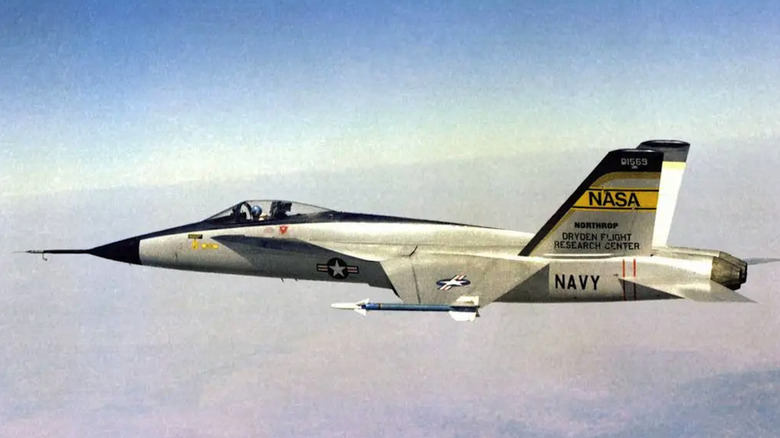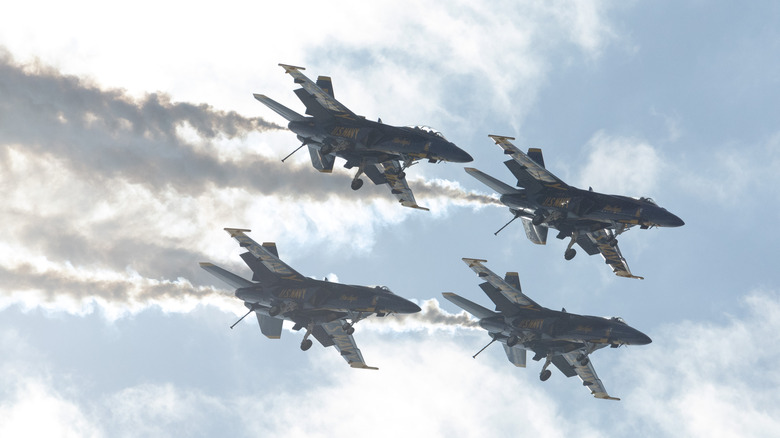Why Don't F-13 And F-17 Fighter Jets Exist? Exploring The Rumors
When it comes to official designations for U.S. fighter planes, they generally follow a pretty logical pattern. After all, the U.S. has flown the F-14 Tomcat, F-15 Eagle, and F-16 Fighting Falcon, the latter of which has evolved throughout its 50 years of service. However, the military fighter jet designations then skip to the F-18, followed by the F-22. It makes one wonder why. Defense companies like Lockheed Martin and Boeing commonly designate their prototypes with numbers and those numbers sometimes stay with the prototype. The F-17 designation almost came to service in the 1970s.
Northrop Aircraft (now Northrop Grumman) developed the YF-17 Cobra and flew prototypes in 1976 with some help from NASA. The specific contract Northrop was working on, according to the Western Museum of Flight, was for a lightweight fighter jet as part of the United States Air Force's Lightweight Fighter Program. However, General Dynamics beat out Northrop for that contract, developing its YF-16 into the eventual F-16 Falcon.
The U.S. Navy, on the other hand, saw the merits of Northrop's YF-17 Cobra and awarded it a contract, morphing the heavily tested YF-17 into the F-18 Hornet and Super Hornet series of carrier-based aircraft. Looking at the YF-17, you can absolutely see the resemblance.
A little superstition
The story behind the F-13 designation is a little more murky. A quick online search of "F-13" or any of its permutations reveals that Junkers, the German aircraft manufacturer infamous for producing bombers for Nazi Germany's air force, produced a plane called the F13 in 1919. It was the first metal passenger plane. However, within the United States Air Force, there has never been a modern plane with F-13 as its name. Australia's Air Force, in its online publication, The Runway posits that simple superstition, the fear of the number 13 (known as triskaidekaphobia), is the reason.
The practice of skipping numbers or designations based on vibes also extends to the F-19. Northrop was developing a successor to its F-5 Tiger and skipped F-19 in favor of F-20 because aircraft from the then Soviet Union commonly used odd number designations, such as the MiG-21, the "flying coffin" that has remained in service for more than 60 years, and MiG-19. Regardless of the name, the F-20 never made it past the prototype stage.
That may sound less official than anything you'd expect from the military, but when you're developing next-generation fighter jets capable of exceeding 1,000 miles per hour and might be responsible for defending U.S. air space, it might not hurt to be a little cautious and superstitious. The major defense contractors of the world probably aren't going to admit that, but it's as good a reason as any.

